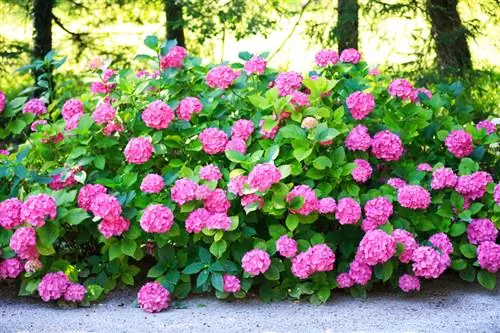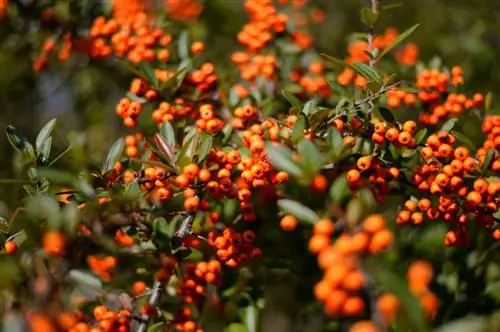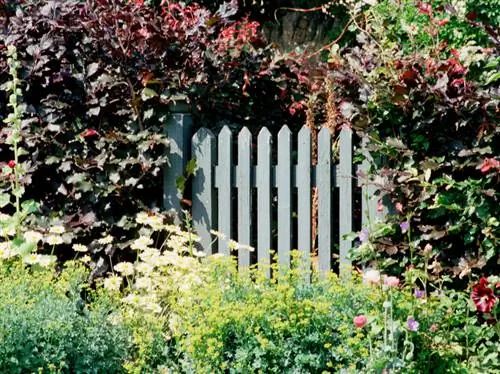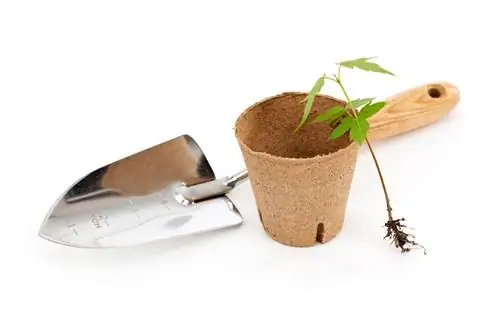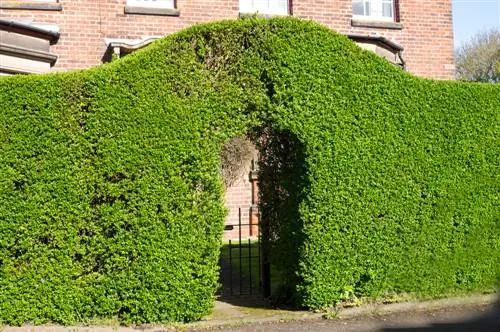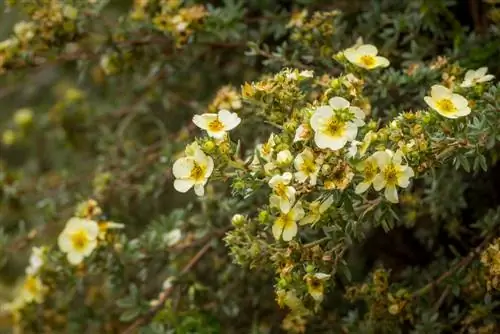- Author admin [email protected].
- Public 2023-12-16 16:46.
- Last modified 2025-01-23 11:20.
Hydrangeas are colorful flowering shrubs that are surprisingly robust and easy to care for. The large flower umbels fit harmoniously into almost any garden, regardless of whether it has a natural or modern design. Depending on the species, it blooms from late spring until well into autumn and enchants the green area during the winter months with the morbid charm of its frost-covered umbels.
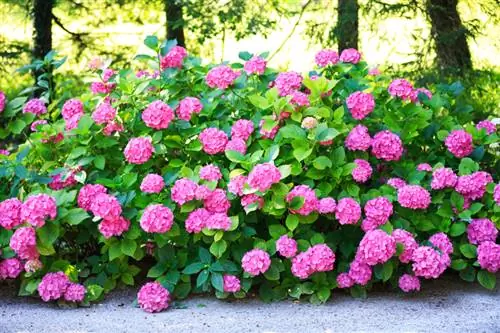
Which hydrangeas are suitable for a hedge and how do you care for them?
Panicle hydrangeas are best suited for a hydrangea hedge because they are robust, tolerate cutting and are adaptable. Plant them one meter apart in spring, paying attention to soil preparation, fertilization and watering. Cut the hedge back in late autumn or spring.
Which species are suitable as hedge plants?
Even if the slightly more sensitive farmer's hydrangeas form dense hedges in France and mild regions of England, in Germany you should only plant these species as hedges in mild regions. In addition, farmer's hydrangeas should be cut as little as possible in order not to endanger the abundance of flowers.
Pranicle hydrangeas are better suited for hedge planting, as they cope well with almost all locations. This hydrangea thrives even in full sun. Another advantage of the panicle hydrangea is its tolerance to cutting. In contrast to other varieties, this hydrangea produces flowers on annual wood and therefore tolerates spring pruning.
Planting the hedge
The best time to plant hydrangea is spring, as soon as ground frost is no longer expected. Since plants have very individual requirements for the soil, soil preparation is crucial:
- Dig planting holes one meter apart, which should be at least twice as large as the root ball.
- Remove stones and roots from the topsoil and loosen the bottom of the planting hole well.
- Since hydrangeas are very sensitive to waterlogging, fill a drainage layer of gravel, coarse sand or granules into the pit.
- Mix the soil with leaf or needle compost and add a thin layer over the drainage.
- Unpot the plants and immerse them in a bucket filled with water until no more air rises.
- Put bare-rooted bushes in water for at least 2 hours.
- Place the hydrangea at ground level in the planting hole and fill with substrate.
- Tamp the soil carefully and water the hydrangea well. This means that even the smallest cavities between the roots fill with soil and the hydrangea grows quickly.
Hedge Care
A hydrangea hedge is very easy to care for and requires hardly any work. Mulching the soil under the bushes not only suppresses weeds, but you also have to water less often.
- Water thoroughly whenever the top centimeters of soil feel dry. In the summer months this may be necessary daily.
- Fertilized with special hydrangea fertilizer, which contains all the nutrients the hydrangea needs. To prevent yellowing of the foliage due to chlorosis, the fertilizer should contain iron.
- Pruning can be done in late autumn or spring as the plant flowers on annual wood.
- Light winter protection is recommended in harsh areas.
Tip
We recommend placing the plants in special hydrangea or ericaceous soil. The composition of this substrate is optimally tailored to the special soil requirements of the hydrangea.

